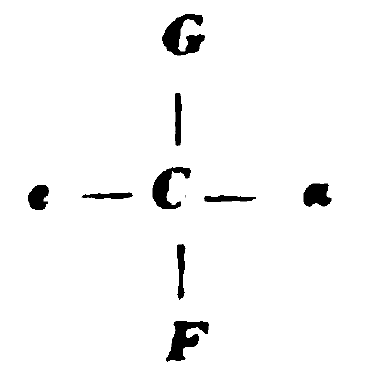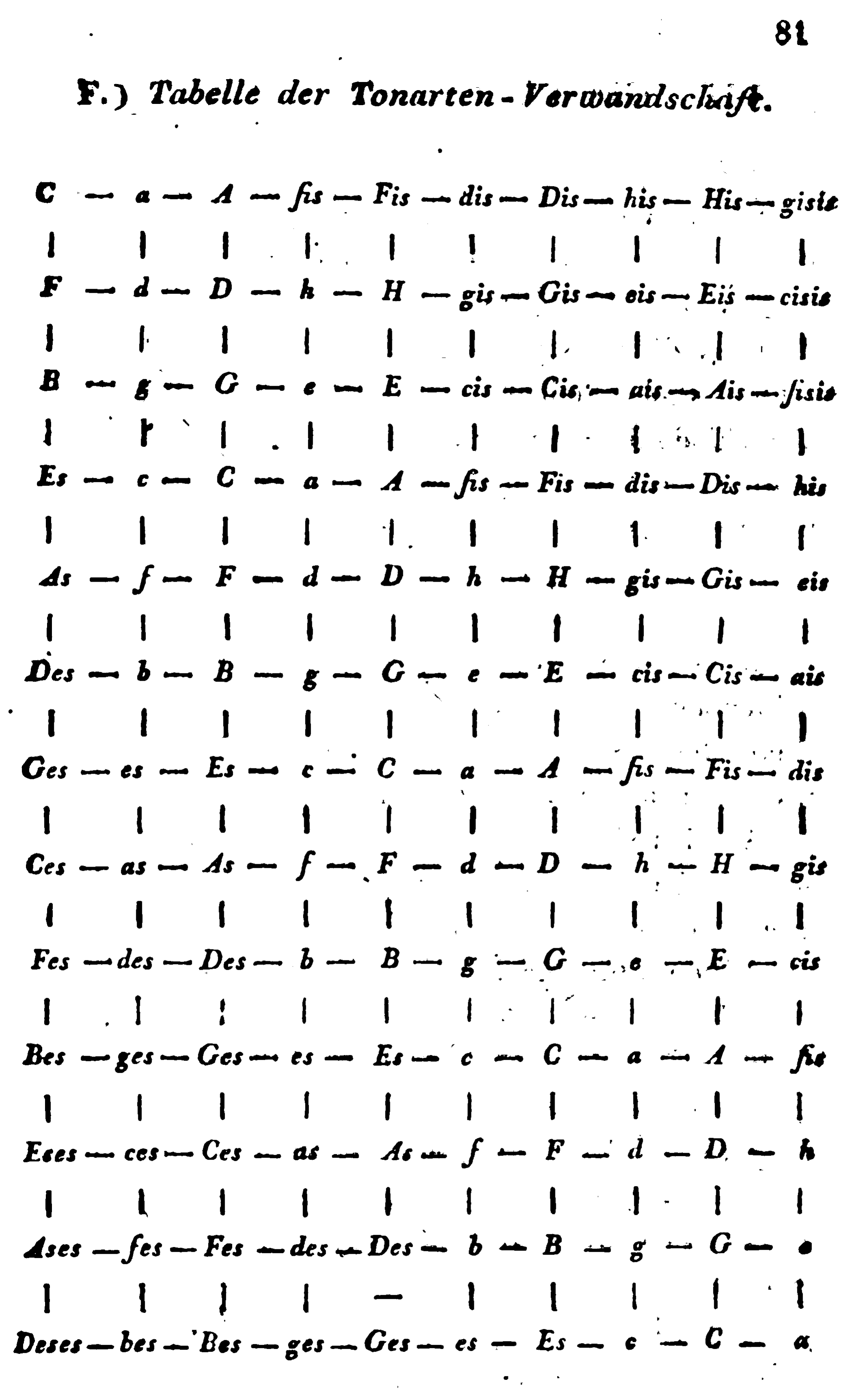In his Versuch einer geordneten Theorie der Tonsetzkunst, Gottfried Weber discusses in volume II, section VI, §§ 161-180 (2d edition, Mainz, Schott, 1824, pp. 64-81) the relationships between keys. He first presents the nearest relationships in major (§§ 162-168, major dominant, major subdominant, minor submediant and minor parallel keys), representing them in a figure analogous to (more precisely a dual graph of) Euler’s Tonnetz:

He continues with the nearest relationships in minor (§§ 169-175), the relationships of second degree in major (§§ 176-177) and in minor (§ 178), the distant relationships (§ 179), each illustrated with a similar figure, and ends in § 180 (p. 81) with a “table of all key relationships”, which extends to twelve fifths on the vertical axis and four thirds (both from major to major and from minor to minor) on the horizontal axis, i.e. in both directions until the enharmonic equivalent is reached:

This figure is at the origin of Schœnberg’s “Chart of the Regions” in major and in minor, in Structural Functions of Harmony (London, Ernst Benn, 1983, pp. 20 and 30).
N. Meeùs
